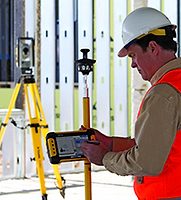McKinstry turns to RTS technology to improve installation time

McKinstry, based in Seattle, Wash., has introduced Robotic Total Station technology in constructing the 88,000 sq. ft. four-story Matilda Building in Spokane, Wash.
While BIM has become commonplace in construction, RTS bridges the gap between digital models and actual implementation on the project site. With tablets in hand, McKinstry engineers can beam measurement data spatially with an RTS laser, pinpointing where inserts for the Matilda Building’s mechanical, plumbing, heating, ventilation, air conditioning and fire-protection systems should go with the highest precision achievable today. The RTS will also help ensure wall and architectural layout quality.
Measurements that once required an entire team can now be completed by a lone engineer, reducing the labor required to hang inserts by 75 percent and increasing overall building and mechanical system accuracy to within a tenth of an inch. As a result, worksite crowding, injury risk and project costs are diminished, while the overall construction delivery timeline can be expedited. RTS also represents a departure from marking gridlines with tape measures and string, a practice susceptible to factors like wind and human error, inviting inaccuracies that can slow projects down. This also significantly reduces waste by allowing McKinstry to evaluate and control the materials in the fabrication shop as opposed to delivering bulk commodities on the project and assembling them onsite.
McKinstry has used RTS before, but this marks the first time it’s been used in the Spokane market.
More details here.
Source: Journal of Business




